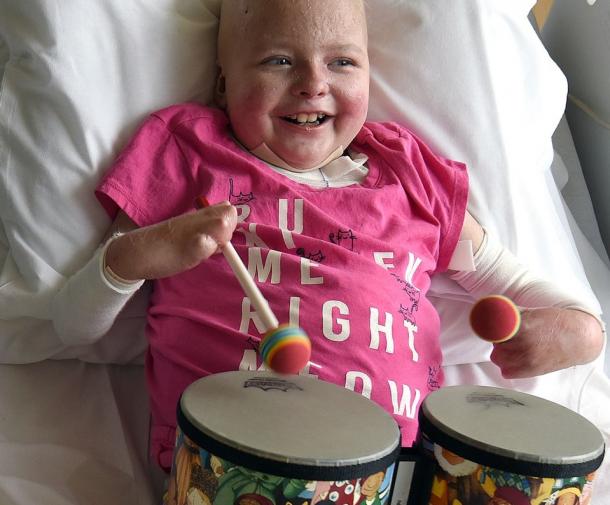
What can you expect in a session?
There is really no such thing as a typical session—the music therapist will respond to whatever seems most helpful for you that day.

The therapist will want to get to know you, so they know what you like-your favorite songs, what helps when you aren’t feeling well, what gives you energy, or perhaps what helps you feel less alone, what makes you happy. They will also want to discuss your goals, so they can suggest activities to try.
You might want to learn to play an instrument to show yourself (and others) that you can do it—that you are emerging and thriving. You might want to write a song that expresses some of what you went through or are feeling now—a way to capture your experience and share it --something that your family and friends can listen to that gives them a sense of you. Something that will be remembered. Or you might want to increase your physical endurance.
The music therapist will offer activities to support your goal or to help you cope that day. They might suggest some drumming or moving to music. They might teach you how to play one of your favorite songs or suggest some chords for a song you are writing. Or they might play some music to help you relax—or the opposite if you want--something energizing, songs that distract you and give you a break from discomfort or long days.
Music therapists tailor what they offer depending on many factors, including age, stage of treatment or recovery, how the person is feeling that day, and their individual preferences. For example, on some days your child might feel too ill to move, but might enjoy listening to some of their favorite songs. On other days, they might be more active and happy to dance or play the drums.
Greta, a music therapist in the bone marrow transplant unit at University of Minnesota Masonic Children’s Hospital in Minneapolis explains it this way, “it's about the presence of being in the room …. it's coming in and just presenting their preferred songs and hoping for any response or engagement—perhaps it’s a smile. We look to see how we can we adapt and still give the child some movement, some activity.”
Much of what music therapists do during the first few sessions is to get to know the child or person. The goal is to find out what they like and to establish a rapport, where the therapist becomes a trusted support.
Again Greta explains, “I can just be a safe person who's a break from mom and dad to just be with. It is important for these patients and families to have someone who is consistently around to offer support.” And moreover, just to experience together “the power of the live music, the power of that human connection. Letting kids know, especially if they can't participate with me as they once did, that I'm still there to support them through this. I’m not just going to drop off when you get sick.”